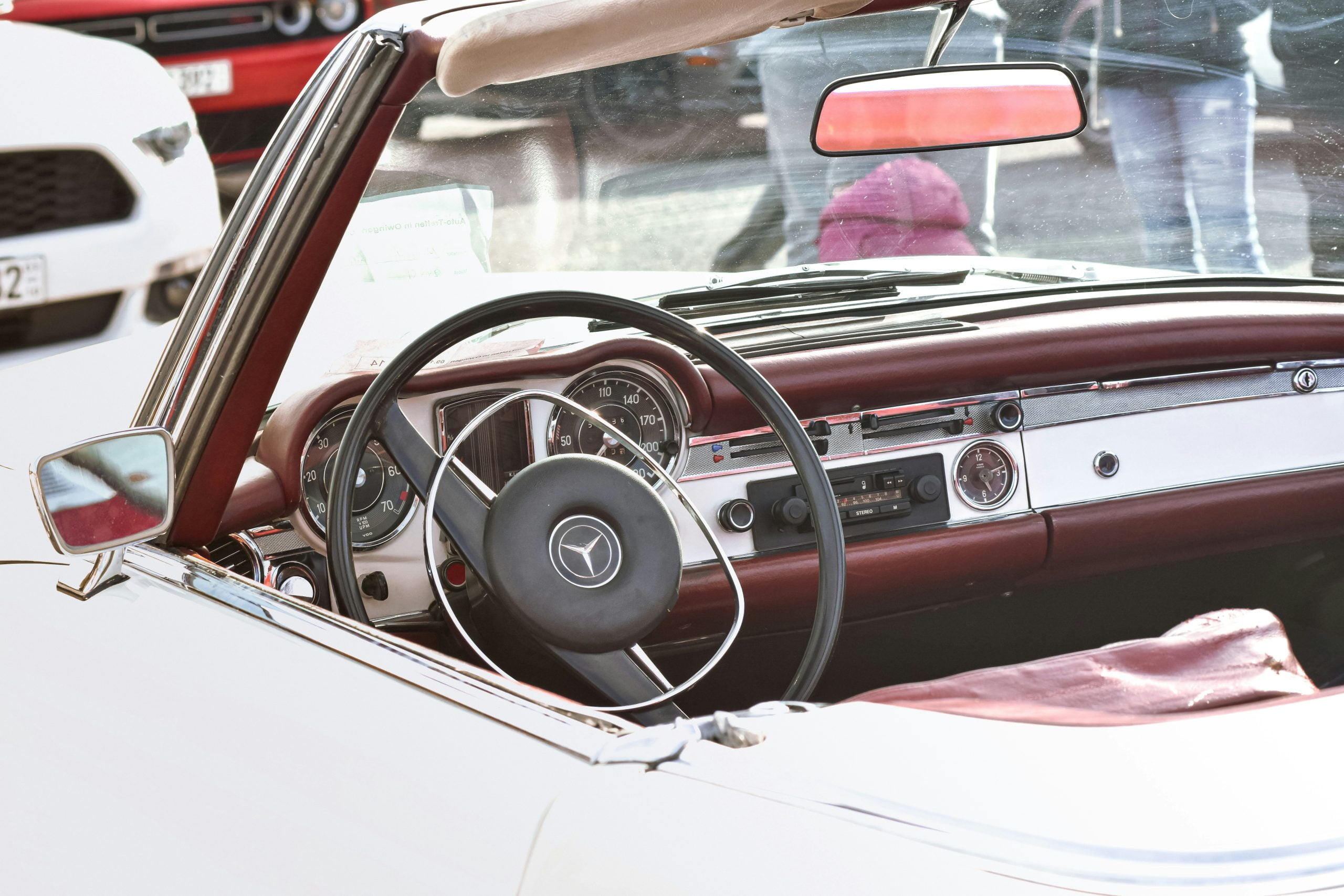1963 Mercedes-Benz SL Pagoda
The Mercedes-Benz SL Pagoda, officially known as the Mercedes-Benz W113, is a classic roadster produced from 1963 to 1971. Renowned for its timeless design, innovative features, and robust engineering, the SL Pagoda remains an icon of Mercedes-Benz craftsmanship and automotive excellence. The development of the Mercedes-Benz SL Pagoda began in the early 1960s as a successor to the 300SL and 190SL models. The goal was to create a luxurious yet sporty convertible that would appeal to discerning customers looking for both style and performance. The project was led by designer Paul Bracq, who incorporated elements of contemporary design trends while retaining Mercedes-Benz’s distinctive elegance. Introduced in 1963 at the Geneva Motor Show, the Mercedes-Benz W113 SL quickly gained acclaim for its distinctive concave hardtop, which earned it the “Pagoda” nickname. This unique roof design not only provided a sleek profile but also enhanced structural rigidity and reduced wind noise compared to traditional soft tops.




The Mercedes-Benz SL Pagoda is celebrated for its understated yet sophisticated design. Its clean lines, graceful curves, and balanced proportions give it a timeless appeal that has aged remarkably well over the decades. The distinctive concave hardtop, designed to resemble the curved roofs of traditional Japanese pagodas, is a hallmark feature that distinguishes the SL Pagoda from other convertibles of its era. The interior of the SL Pagoda exudes luxury and craftsmanship. The dashboard features elegant wood trim, chrome accents, and clear instrumentation, reflecting Mercedes-Benz’s commitment to high-quality materials and meticulous attention to detail. The seats are upholstered in plush leather, offering both comfort and support for long drives.
Underneath its elegant exterior, the Mercedes-Benz SL Pagoda boasted advanced engineering and impressive performance capabilities. The chassis was based on a shortened version of the W111 sedan platform, featuring independent suspension and disc brakes on all four wheels for superior handling and stopping power. The SL Pagoda was initially offered with a 2.3-liter inline-six engine producing around 150 horsepower, coupled with either a four-speed manual or optional automatic transmission. In 1967, the engine was upgraded to a 2.5-liter unit, increasing horsepower and torque for enhanced acceleration and responsiveness.


Driving the Mercedes-Benz SL Pagoda is a sensory experience that combines refined luxury with exhilarating performance. The car’s precise steering, well-balanced chassis, and responsive throttle response make it a joy to drive on both winding roads and open highways. The suspension absorbs bumps effortlessly, providing a smooth and comfortable ride characteristic of Mercedes-Benz luxury cars. The SL Pagoda’s convertible top, whether the iconic hardtop or optional soft top, allows for open-air motoring at the touch of a button or lever, adding to the versatility and enjoyment of the driving experience. With the hardtop in place, the cabin remains quiet and well-insulated from wind and road noise, further enhancing comfort during long journeys.